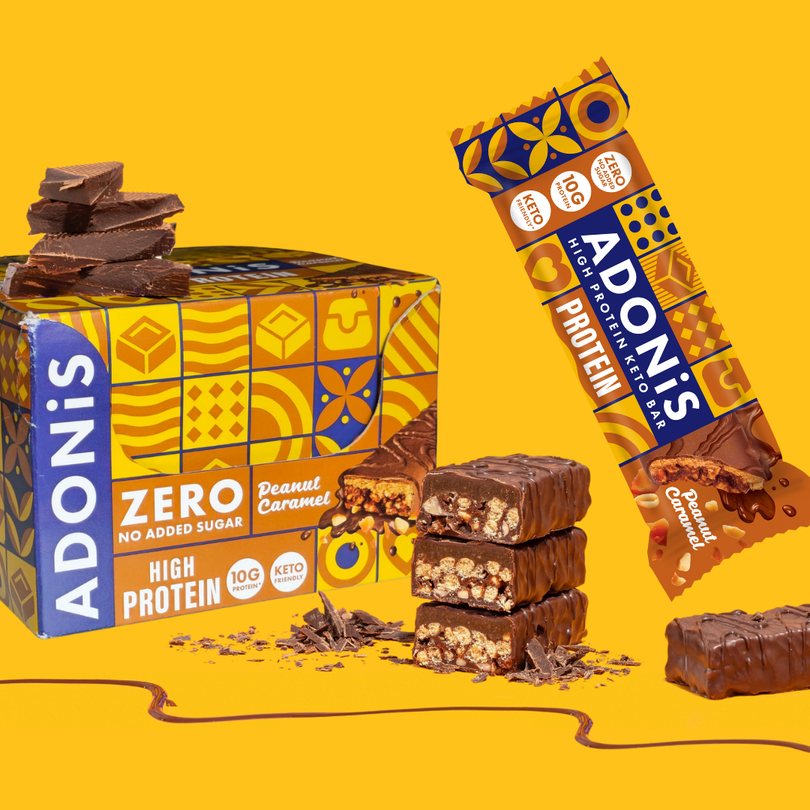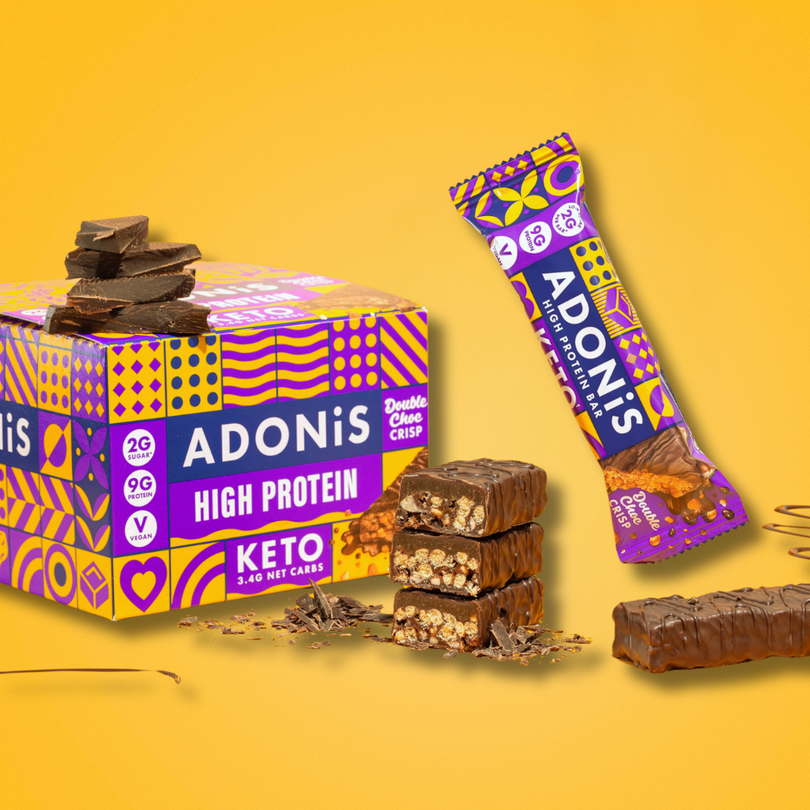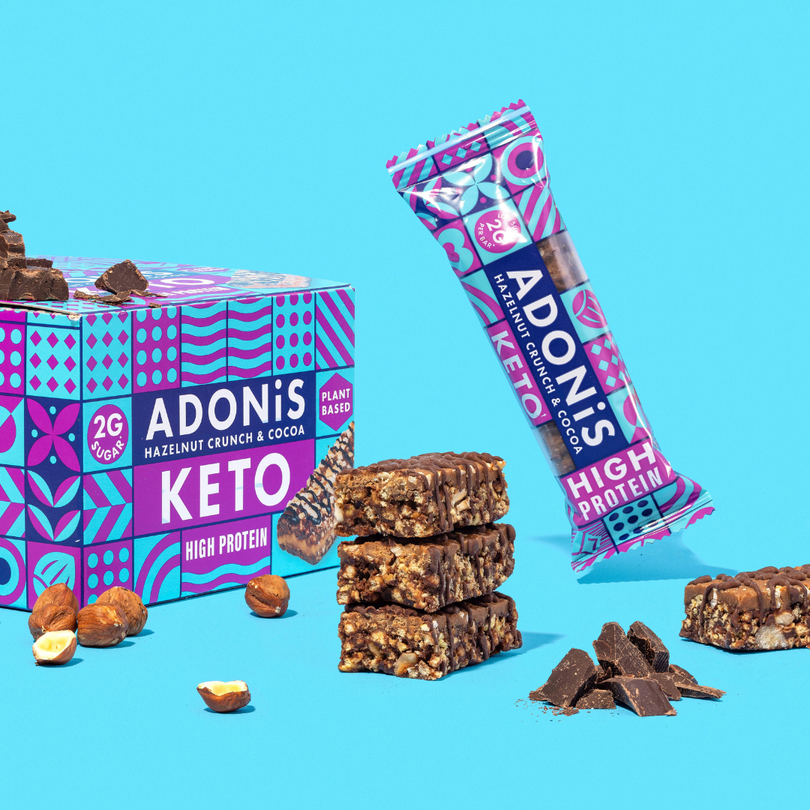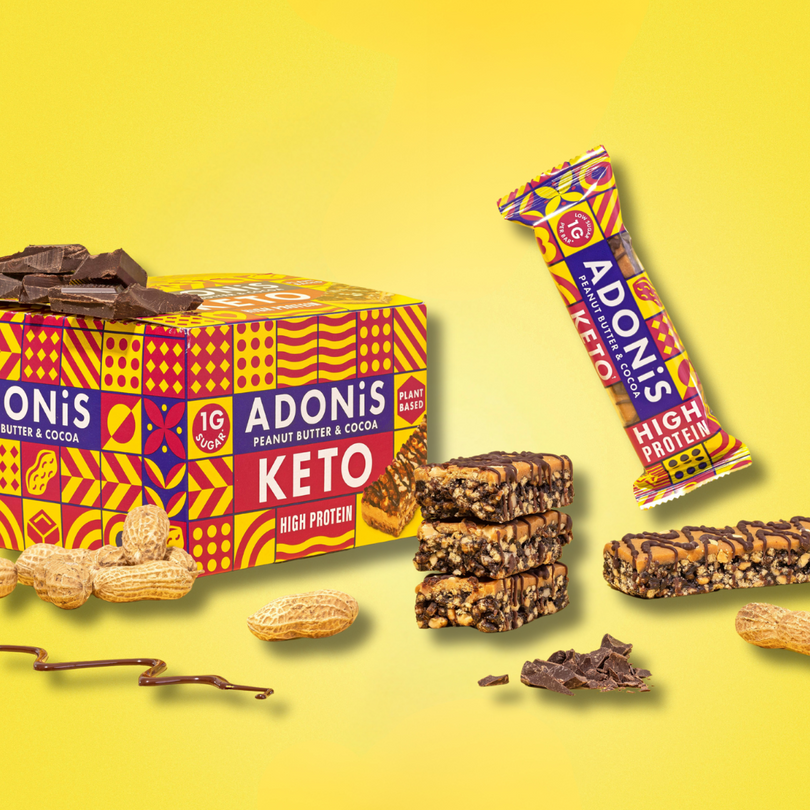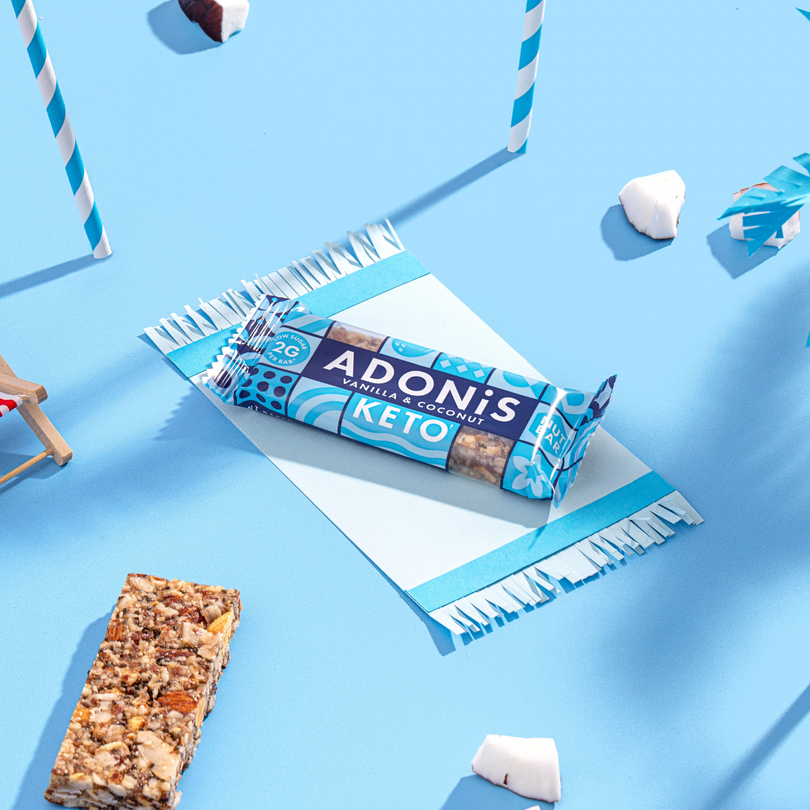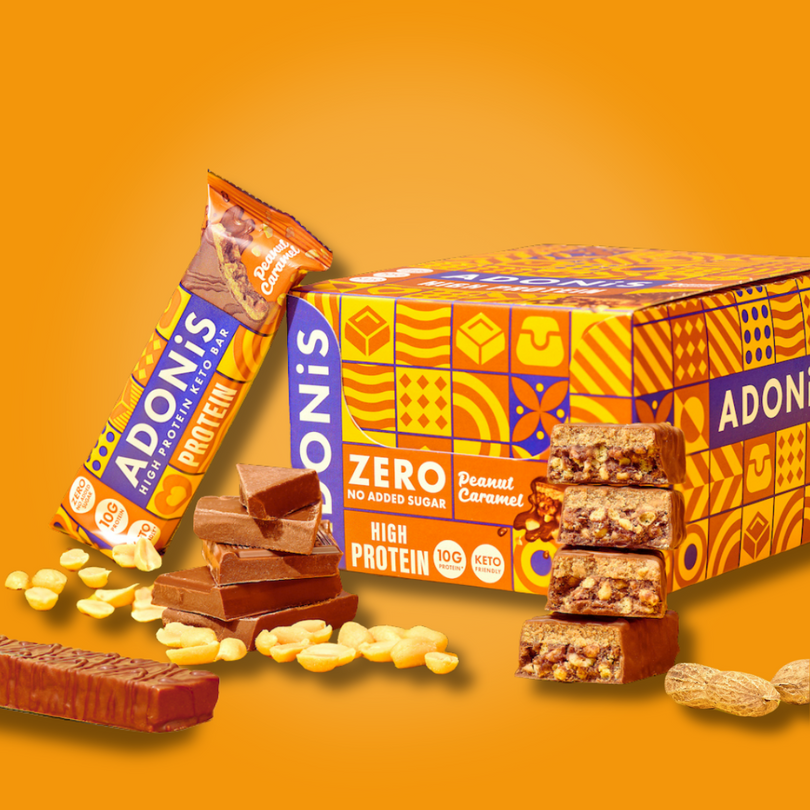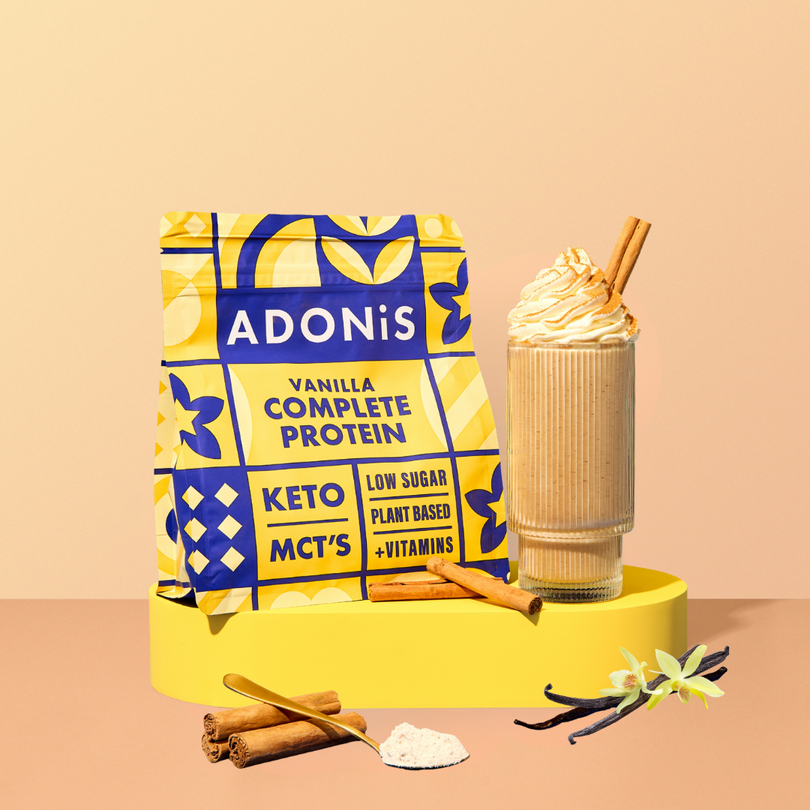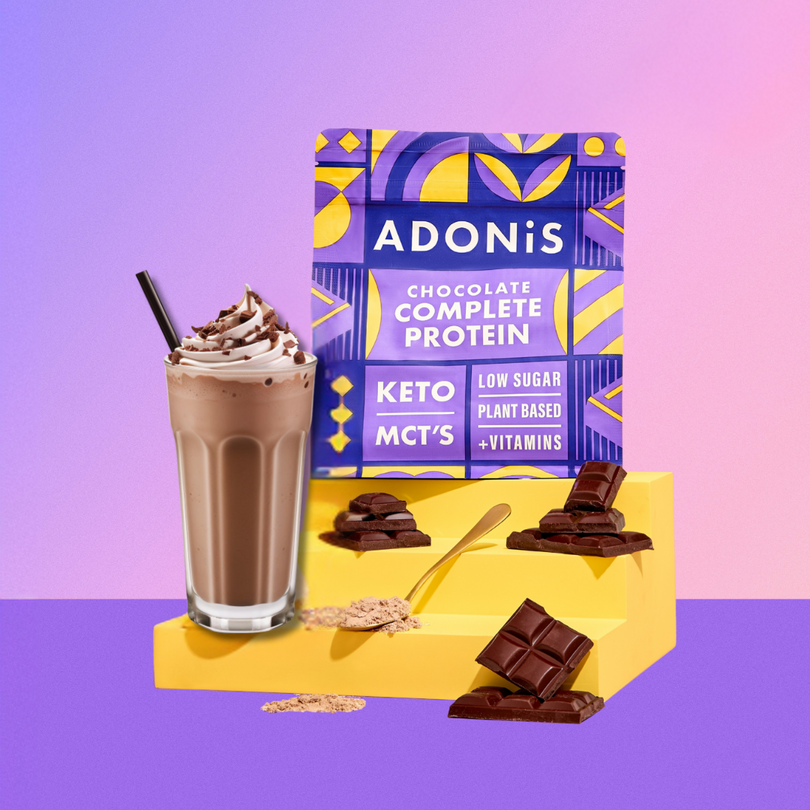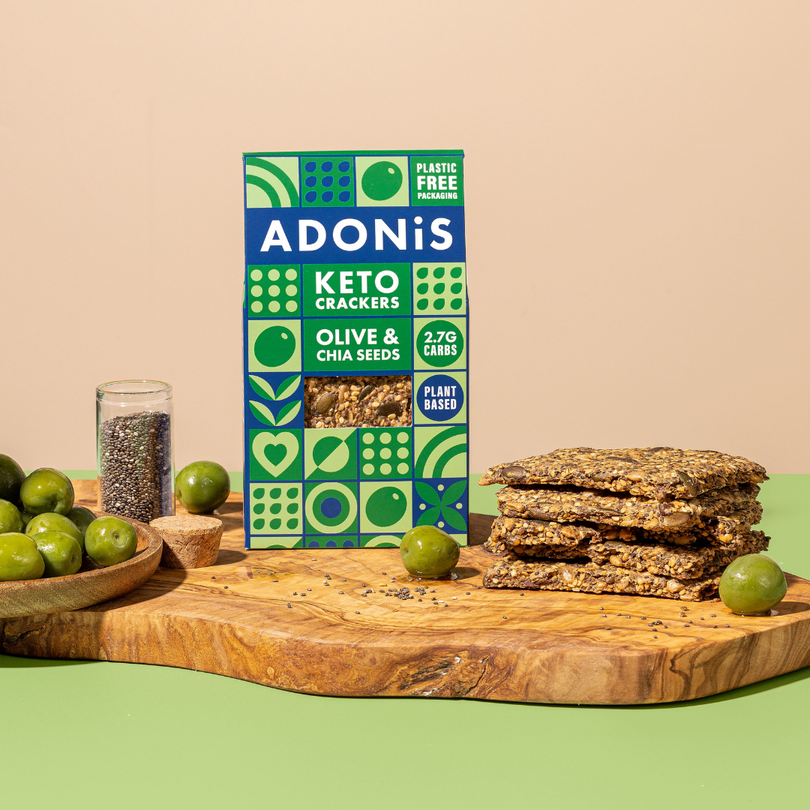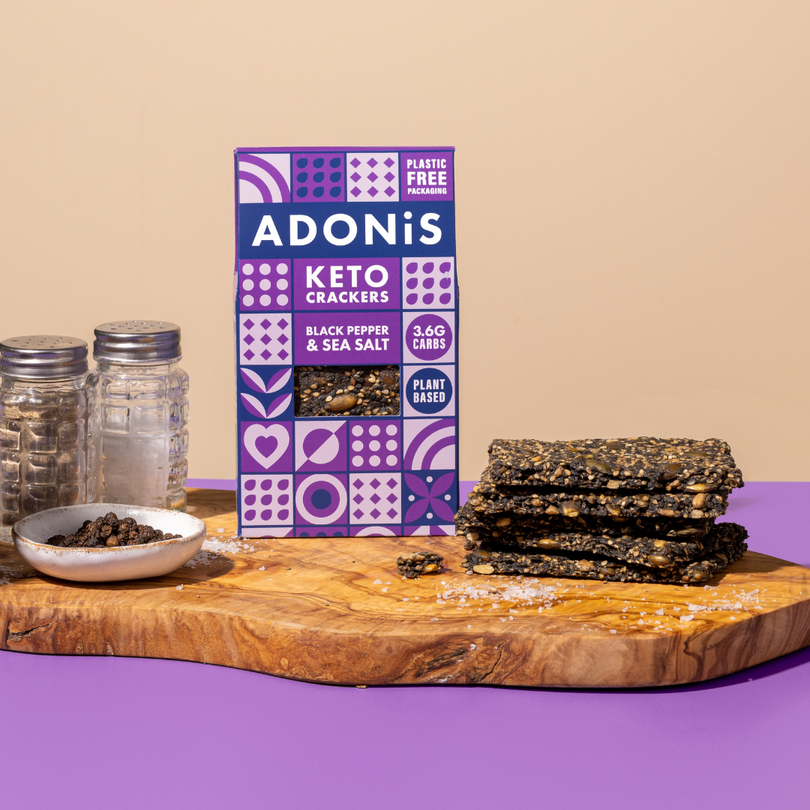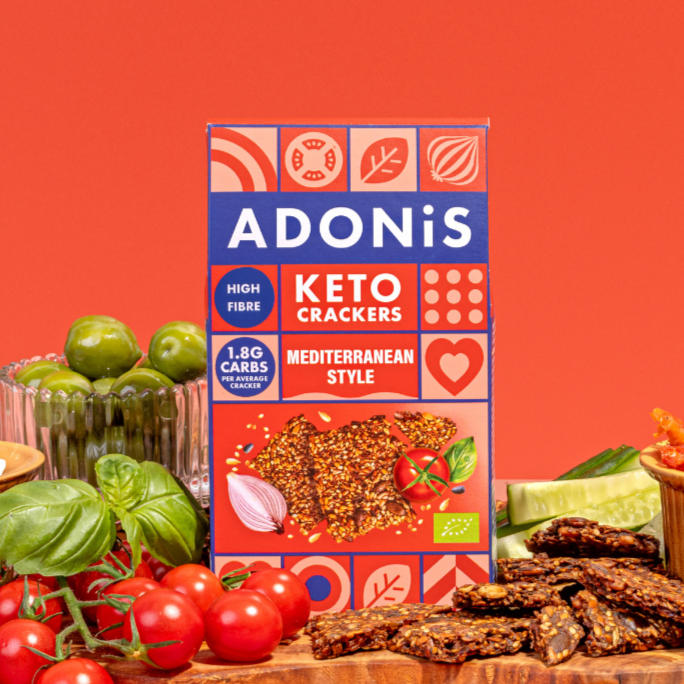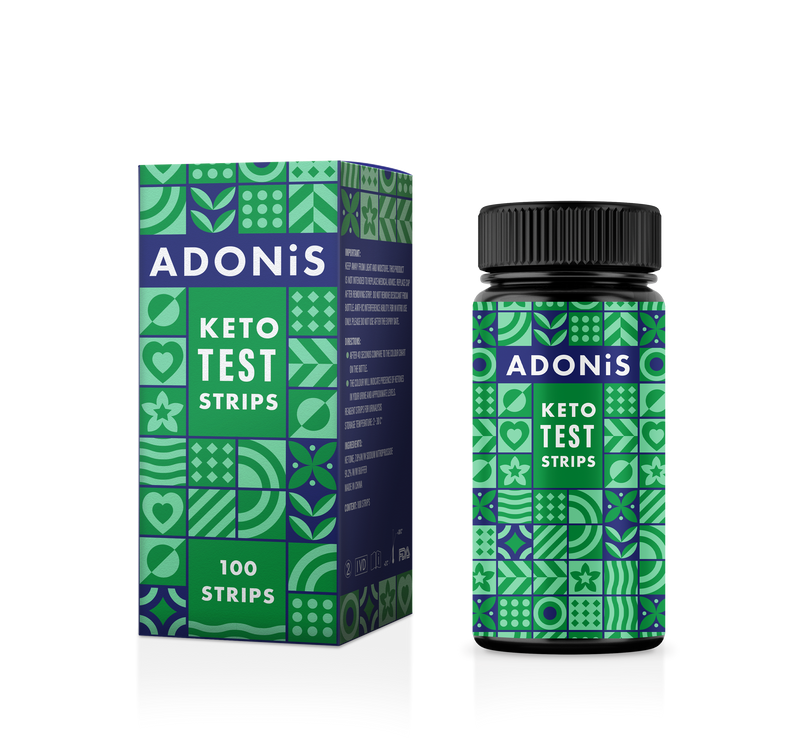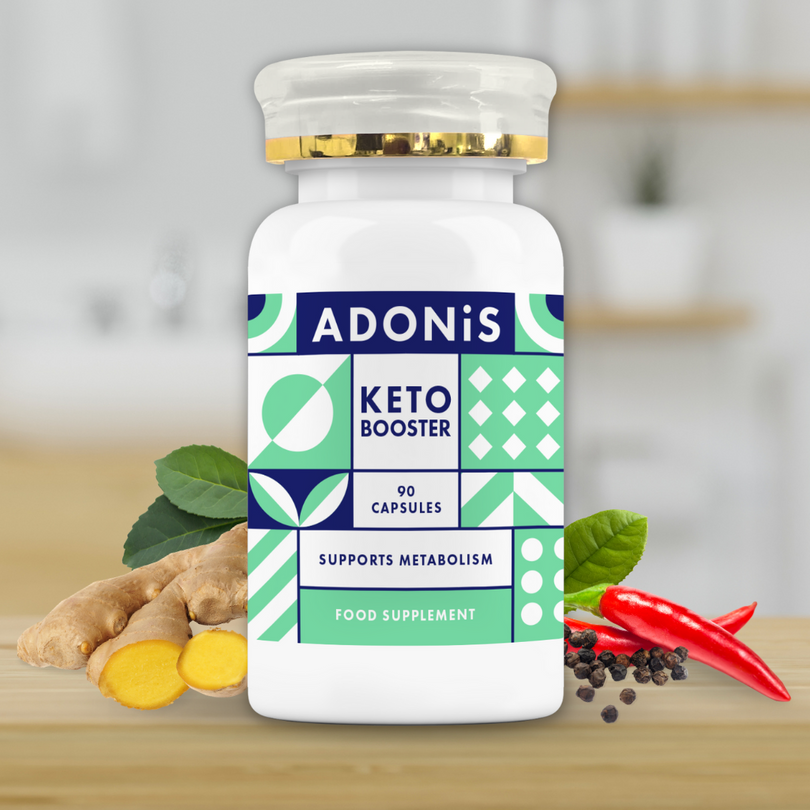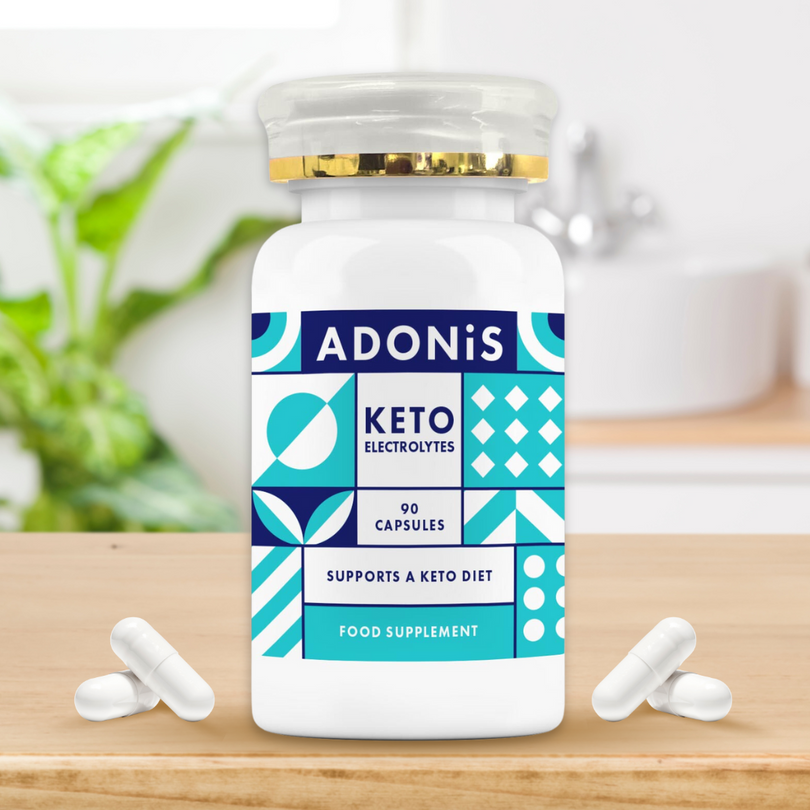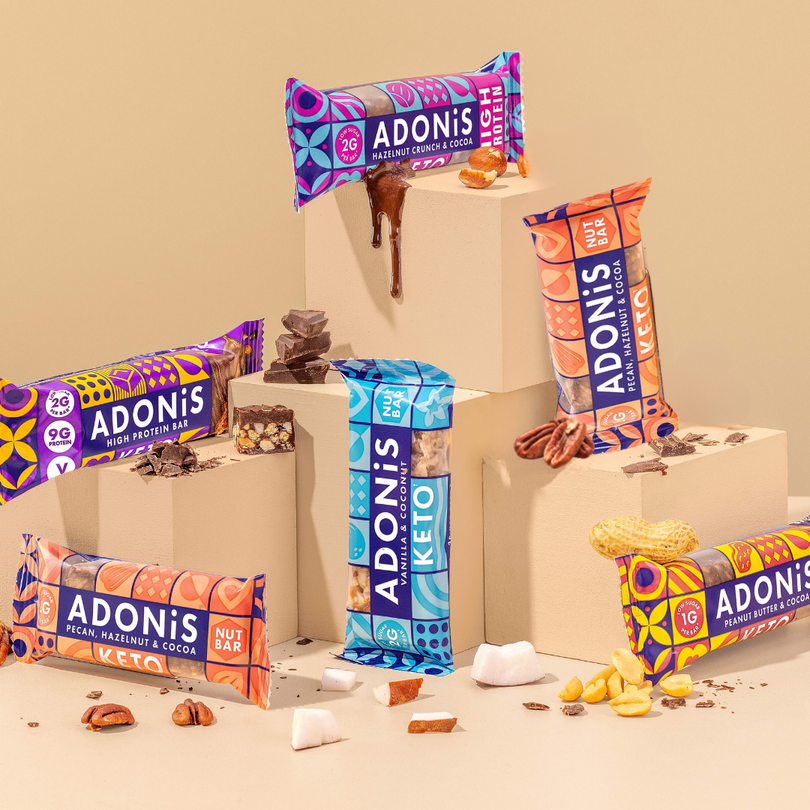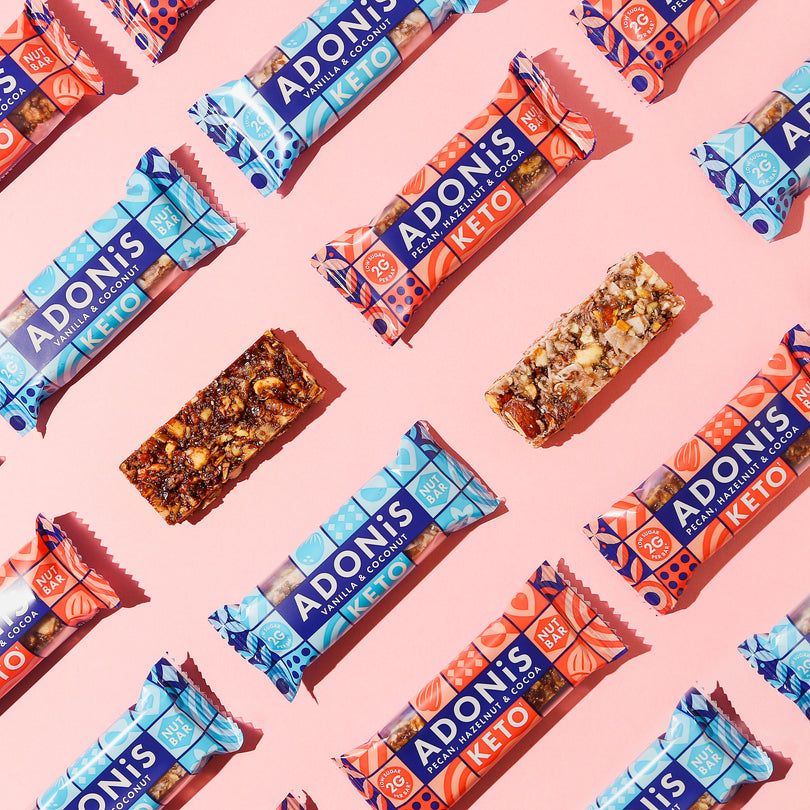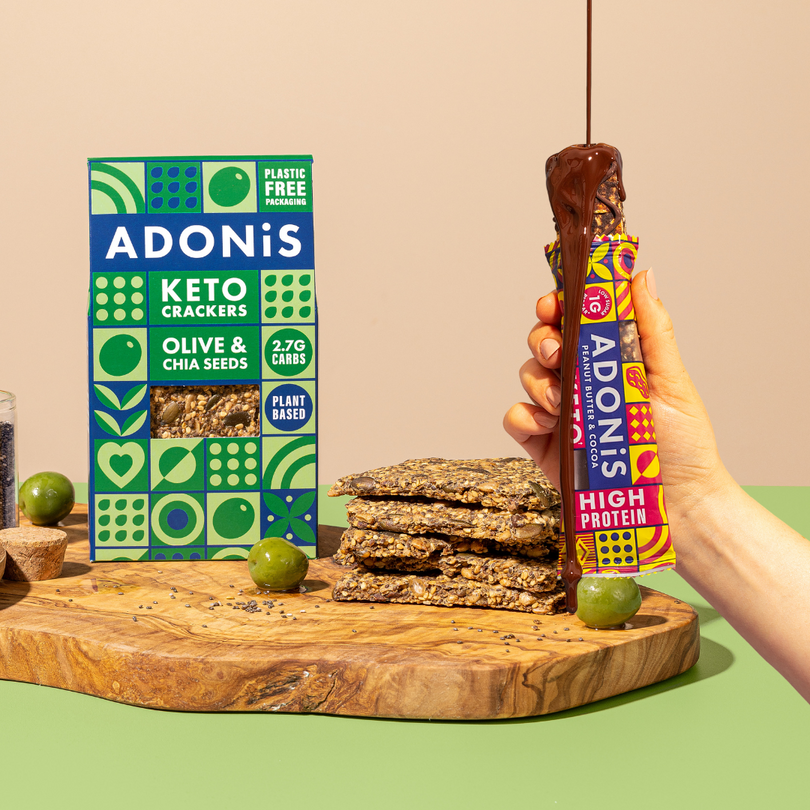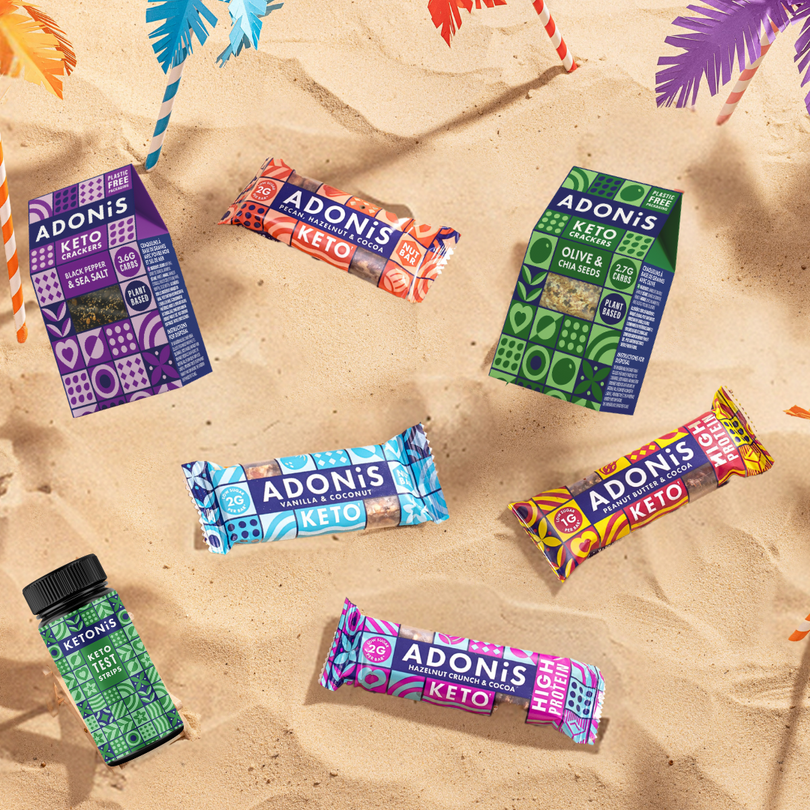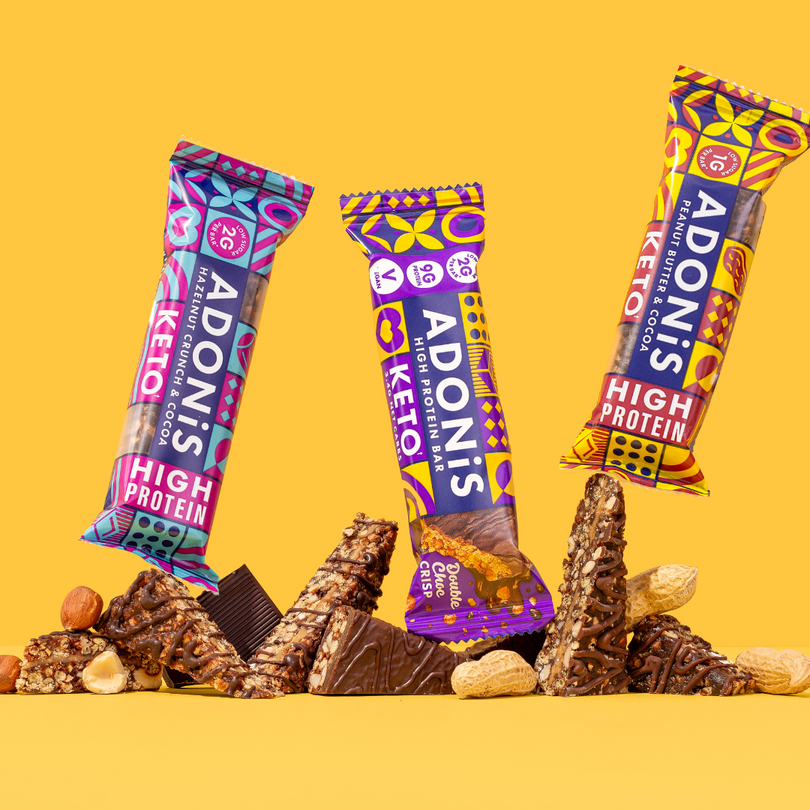FATS EXPLAINED: A COMPLETE GUIDE
12 min read
Fats explained: a complete intro to dietary fats
You probably don’t know how dietary fats work – and that’s a big problem. Dietary fats aren’t well understood, and it can trip you up when you try to take control of your diet and health. The way that you think about a food and set of nutrients is the first step to improving your choices – and diet – around them. Today we’re going to be looking at what dietary fats are, how you’ve been lied to about them, what they do, and how you should use them. By the end of this article you’ll be able to make the very best of these high-quality, high-energy nutrients and choose the best ones for your needs. We’ll be outlining all the important facts so you can make your own informed decisions and understand what is fatty, what isn’t, and the difference between high-fat foods and high-fat physiques.
What are dietary fats?
If we asked you ‘what is fat?’ you might grab a bit on your hips or stomach and point at it. We all have it – it’s a part of our body, no matter how lean or athletic you are.
On the other hand, what if we asked you what a dietary fat is?
This is a distinction so many people don’t understand but which drives a huge amount of the difference between how scientists talk about fat and how the media talks about fat. Fat in foods is not a 1-1 cause for the fat in your body – losing fat doesn’t mean cutting fat out of your diet.
That’s why we’re going to talk about what fats are – because everything you need to know comes from there.
In scientific terms, fats (also known as lipids) are a type of compound that are insoluble in water and high in energy.
Fats are one of the fundamental patterns that nutrients take up in living things – from plants and animals alike. The way that we structure out diet will expose us to fats whether we like it or not, so the best way to deal with it is to be informed and take control.
Fats are a 9-calories per gram macronutrient.
This means that, for every gram you eat, you’re racking up 9 calories. This is why fats make up a smaller part of most people’s diets and why so many people look to reduce their fat intake – 100g of fats is 900 calories, which can easily be the difference between eating appropriate amounts relative to need and over-eating.
Saturated and Unsaturated Fats
We break fats down based on their structure into 2-3 categories. We call these saturated and unsaturated fats. Then there are mono- and poly-unsaturated fats, which are slightly different but have a lot of things in common, when we zoom out.
Saturated fats have a bad reputation but aren’t as bad as we thought. We need to limit our intake and avoid the bad saturated fats like trans-fats and low-quality fats – but they’re not inherently harmful. There are some great saturates (like MCT oil) and the key is simply not overeating them.
Monounsaturated fats are found in a wide variety of fatty foods like nuts and seeds, but also animal products and seafood. They’re a great choice for health and offer both cellular and metabolic health benefits.

Polyunsaturated fats are what we usually call ‘good’ fats because they tend to be heart-healthy. This includes important fats like Omega-3s, but also less-good Omega-6s. You can get good and bad polyunsaturated fats, just like any others, so we can’t just drink them down and expect to get healthier! Fats are built around these 3 classifications so, when you’re looking at tracking through your diet, you should focus on looking at which sources you’re getting. We’re going to discuss the balance of these fats later on, but keeping this 3-way distinction in mind will really help you make sense of fats and their effects on your body! The important thing to remember is that fats are primarily long-term energy sources – both in the diet and the body. They also provide essential functions in the body that you need to stay alive, stay healthy, and help your body make the most of your diet overall.
The history of dietary fats
There was a long time during which dietary fats were treated as being unhealthy. They were seen through the common-sense lens of “that’s a fat, and it’s unhealthy to get fat, so fats must be unhealthy”.
Famous early studies by Ancel Keys, for example, set the tone of dietary fats being a major component in heart disease and over-simplified the “saturated = bad, unsaturated = good” concept we still see today. The problem is that these studies were both unfairly structured and they became popular as a part of a larger thrust towards making fats look bad and sugars look less-bad. In recent years, many studies that confirm Keys’ approach use epidemiological data and less-than-convincing associations. These are a problem because they go by tendencies that ignore the countless other factors in heart disease risk.
The result was a long period of time when “low-fat” was treated as healthy. Not only did that squash the important differences between individual fats and types of fat, but it left us with a culture that is still scared of fats. It’s only recently that we’ve started to undo this unfair reputation and look at the real science.
More recent studies and the scientific consensus around nutrition are clear: fats are a part of a healthy diet. Just like any other nutrient group, they need to be balanced, high-quality, and taken in relative to your needs.
A recent study on the composition of a diet – the amount of protein, fats, and carbs consumed – showed that things like obesity and metabolic health concerns, and even heart disease, were not directly related to fat intake. There’s no 1-1 relationship between fats and health problems; it’s about how you use dietary fats and which ones you eat.
For that to make sense, we have to get under the skin and look at what fats do in your body…
What do fats do in your body
What happens when you eat fat?
Eating fat produces a response in your body that increases the release of essential fat-metabolising chemicals and signals that you’ve got energy. However, unlike carbs, this isn’t quite as speedy. Fat-absorption can take anywhere up to 8 hours under normal circumstances, but it does depend on what kind of fats you’re eating and your lifestyle around that meal (such as exercise, sleep, and so forth). Lipase is released, kicking off fat metabolism and breaking down more-complex fats into their simple parts that can be burned up for fuel. This is why you don’t just store dietary fats: more intake means more output, while less intake (as in a fat-restricted diet) means less storage and use.
Where is dietary fat stored?
Dietary fats are mainly held in two places: the muscles and actual fat tissue. Muscles store triglycerides for use as energy during longer bouts of exercise and when at-rest since fats are often used for resting energy turnover. They’re the caretaker energy source for your muscles when they’re not using carbs to quickly produce more energy. Fat tissue – both visceral (around organs) and subcutaneous (under the skin) also store fat. That’s why we get fat when we eat too many calories: the body converts energy into high-density fat, allowing us to carry it around with us for when we need it in future. You can also turn fats into glycogen through an indirect process of breakdown into component parts and conversion. This is a slow process and involves some complicated chemistry, but is why people on very-low-carb and ketogenic diets still have glycogen, even when eating very few carbohydrates. This is stored, again, in the muscles – but also in the liver.
How is dietary fat metabolised?
Dietary and body fat are both metabolised through a process called lipolysis, where triglycerides are turned into energy. They’re converted into free fatty acids (FFA) and glycerol, the most basic components of fats. They go from triglycerides (3 glycerol molecules) down to diglycerides (2 glycerol) and then monoglycerides (1 glycerol molecule), releasing energy at each stage in the reduction or oxidation process. From here, fats are transported by combining them with, or storing them in, lipoproteins. These move glycerol and cholesterol where they’re needed for energy. They go through the lymphatic system into cells, where they’re either burned up or converted back into dense triglycerides for storage. Fat metabolism is complex, there are lots of types of fats, and lots of systems working to metabolise them. It’s far too complex to outline here. What matters is that these processes are regulated by wider diet, lifestyle, exercise, and your hormonal environment. Your body does some complicated things, but what you do is still a crucial factor in how it works.
Ways fats are used in the body
1. Energetics
The first and most important role of fats is as an energy source. We’ve already mentioned the high calorie-content of a gram of fat, and we’re all carrying kilos of them around. The average human is carrying 10,000s of calories of bodyfat with them, and even more in the morbidly obese. This also informs one of the ways that fats work in your diet: as a high-energy, low-volume source of calories. They’re the reason animals eat animals and they’re the basis for some of the high-energy development processes that humans have evolved, like our (relatively) enormous brains. Don’t worry about fats because they’re high in calories. They also happen to be found in great, healthy foods that you should be eating more of like salmon, avocado, olives, and hard cheeses like Emmental. The health and calorie-content of a food are not the same thing!
2. Signalling and kinetics
Secondly, fats also form the signalling factor and building blocks for the development of fat-based compounds in the body. The first and most obvious of these is hormones. Hormones are the body’s internal memo to itself and its systems, organised primarily in the brain, and they control the processes of rest, stress-response, and growth that things like exercise, diet, and sleep do to improve our lives. Hormones themselves depend on a reliable source of building blocks from cholesterol and other fats sources. These tend to come from dietary fats unless you’re on a fat-loss diet, where they may be scavenged from your bodyfat and converted in the liver. Hormonal health is one reason you shouldn’t let your fat intake drop too low, as some fats are essential: they can’t be produced in the body, so you need to get them from food. Omega-3 and Omega-6 are good examples of these kinds of essential fats we all need.
3. Cellular health
Fats have two major cellular roles you need to know: first, they need to form lipoproteins to transport fats through blood and, second, they are used to form cell membranes. Lipoproteins are like floating bags for your cholesterol that travel through the blood so your veins and arteries can function effectively. These reduce the risk of arterial plaque, but they can still cause issues if you have more lipoproteins with less cholesterol in them (this is what doctor’s measure to determine if you have ‘good’ or ‘bad’ cholesterol levels). Cell membranes rely on fat intake for their health and function, with some fats – like polyunsaturated fats or Omega-3s – playing a key role in their health. These combine with key nutrients (such as choline) to support healthier cell function and improve their lifespan. Cells are the foundation of tissues, so their health is important.
4. Metabolic effects
Fats aren’t just in your body doing nothing. They provide an essential part of the overall metabolic make-up of the body and the longer-term energy stores that kick in during times like fasting or genuine starvation to ensure you don’t simply run out of energy and shut down like a meat robot. Fats are also a slow-digesting nutrient which significantly slows down your overall digestion when eating mixed meals. This helps provide a sustained release of energy over time and can reduce the rapid insulin-spiking effects of carbohydrates in a meal, especially useful for when you’re not exercising and don’t need rapid energy stores or replenishments. This makes fats an important part of your overall diet-metabolism complex and helps provide sustainability and consistency. They’re also the basis for non-activity metabolism in the muscles and other organs, which is why we call them the caretaker energy source: they keep everything running while you’re not engaged in direct feeding or exercise.
5. Fat-soluble vitamins: A, C, E, K
Fats are also the solvent for those vitamins that can’t be dissolved in water. Fats are the central player in the absorption of vitamins A, C, E, and K – which are essential in their own right and cover a huge range of processes in the body that you don’t want to deprive yourself of. For example, vitamin C is a key factor in the production of collagen – the body’s single most abundant protein. If you’re deficient in vitamin C because you’re not dissolving it in fats for transport, you’re going to rapidly limit your recovery potential from exercise and activities in everyday life. Fat-solubility doesn’t require a huge quantity of fats, but it’s just one more reason why whole foods – which tend to contain fats and vitamins – are a great place to start. High-fat diets that promote more seafood, high-quality meats and dairy, eggs, and fat-rich plants get to capitalise on this boosted digestion and absorption, so look out for fat and vitamin combos.
6. Fat and exercise: energetics, substrates, and metabolism

Fat is not only used as the obligate resting energy source, but as a key player in energy production during lower-level, longer-duration exercise. Think about exercise and rest on a continuum. On one end you have the 100m sprint – an exercise in absolute power that only lasts for around 10 seconds (if you’re really good at it), or a 40yd sprint for most of us. On the other end you have waking inactivity – laying on the bed doing nothing.
As you move from rest towards sprinting, you slowly increase the amount of carbohydrates you use and decrease the amount of fats. Fats fuel rest, general activity, endurance exercise, and some of the demands on your mid-intensity exercise, too. Exercise is a key player in the health of fats and it offers after-the-fact benefits, too, where fat is oxidised to make up for loss of energy after a workout and to fuel recovery (called EPOC). As everywhere else, fat’s role in your energy supplies is complicated and getting better dietary fats and more effective fat-metabolism can help support your whole system before, during, and after exercise.
Dietary fat myth-busting
Because of the mixed history of science around body fat and dietary fat, there are a lot of myths that people still believe. These filled the gap in the actual education around fats and have been stubborn to shift. Getting your head around these big headlines is a great way to better-understand
Dietary fat is the same as bodyfat
This is key: dietary fat and bodyfat are not the same thing. You might turn some of your fats into bodyfat if you’re over-eating or you’re deliberately trying to gain weight, but you may also turn them straight into energy to fuel an ultra-marathon. What happens to fats in your body and where they end up is a function of: type and quantity of fat, overall diet, energy intake and output, and what kind of exercise you’re performing. These are factors that make fat-metabolism a bit more complicated than “eat fat, get fat”. Fats are nutrients first and foremost, and that means they’re there to nourish your body and provide it with energy and raw materials. Oversimplifying it to say fats make you fat just misses the nuance of how human bodies use food to perform activities and build tissue.
Fats make you fat

This one isn’t true in the way people think. Sure, eating more fats means your body uses more fats – but eating less fats doesn’t cause you to lose fat by itself. Eating lots means using lots, but also storing extra energy as ketone bodies for use as energy. The point is simple: fat doesn’t make you gain fat. The changes to fat intake and fat metabolism keep track to make sure that – when calories are equal – you’re not running out of energy and you’re not going to need to worry about extra fat gains. High-fat diets don’t cause fat gain because the fats in your diet are being burnt up for energy and you’re going to help yourself out of those bad carb-habits so many of us have worked up.
Fats are unhealthy / bad for you
Dietary fats are not bad for you – there’s not a 1-1 relationship between fats and health. More fats isn’t directly better or worse. Human bodies just don’t work like that. Too much bodyfat is bad for you, but that’s not the same (as we discussed).
Fat intake needs to be relative to your overall energy needs and your fat needs specifically. If you’re a small woman who has a relatively peaceful, low-activity life that revolves around long walks and endurance swimming for exercise, fats are perfect for you.
On the other hand, if you’re a big dude with a love of sprinting and Olympic weightlifting, then you need more carbs.
The point is simple: fats are part of a balance that is individual to you. We all need some – and you can’t just cut them out of your diet. Fats are an essential part of everyone’s diet and need to be selected for quality.
Let’s be clear, there are only a few things about fats that are bad for you: eating low-quality fats, too many, or using fats as a way of over-eating compared to your calorie needs.
The only other way that fats are unhealthy is if you don’t eat enough to support the vital functions of your body!
Types of fat: How to balance your saturated and unsaturated fat intake
As we discussed before, fats break down into saturates and then two types of unsaturates – mono and poly. Your diet needs all of these to be healthy and effective. Over-focusing on one type can lead you to excluding the others and leaving your body in a deficit of important nutrients that provide their own benefits. Variety is helpful in almost every area of diet.
Essential Fatty Acids: Omega-3 and 6 Fats
Dietary fat selection should start out with the essential fats that you can’t get in your own body. Omega-3 fats are the single best example because they control the balance of eicosanoids in the body, which controls inflammation. Omega-6 fats are pro-inflammatory but are also essential. You can’t just not eat any, but they do tend to come from standard dietary sources like nuts, seeds, eggs, and other vegetables – so they’re not usually something you need to chase down. Other good examples are fats that are known to have positive effects. For example, olive oil and related fats that are rich in polyunsaturated fatty acids (PUFAs) improve cell membrane health and reduce the risk of heart disease compared to saturates.

Selecting Towards Unsaturates: Priorities, Not Elimination
What does matter is you should generally preferentially choose unsaturated fats. However, saturated fats aren’t bad for you, and you should still get some – especially some of the powerful, healthful fats like those found in coconut oil and MCT oil. There’s a simple rule of thumb that you can use to guide your fat intake: Saturates: 1/3 or less of your total fat intake Mono-Unsaturates: around 1/3 of your total fat intake Poly-Unsaturates: 1/3 or more of your total fat intake This sets your priorities roughly where they need to be to provide the wide-ranging support to fat-metabolism, cellular health, and hormonal needs all at once. It’s a great starting point and you can begin shuffling to meet your personal needs afterwards
Selecting Fats for Quality
Saturated fats
Saturates don’t need a huge presentation in your diet. They should come, primarily, from high-quality animal sources like eggs, meats, and high-quality dairy products like Greek yoghurt. MCT oils are the best form of saturated fat, for sure. These are found in coconut oil but can be taken in directly through supplementary MCT oil – which offers the most concentrated form of caprylic acid – the most powerful saturated fat for boosting fat-metabolism and muscular health. Focus on quality of source, especially with animal products, where the quality of rearing and dietary factors will work up the food chain into you. Look for Omega-3 rich sources for things like butter, and insist on the best sources possible.
Monounsaturated fats
Monounsaturated fats are similar to PUFAs with slightly less general benefit. MUFAs are also present in olive oil, eggs, nuts, seeds, and other high-quality fatty foods. This makes them a good staple fat for your diet – they’re actually quite hard to avoid! MUFAs are especially important as a staple fat for improving your overall cholesterol levels where they help regulate towards a healthy and functional baseline. They play a crucial role in the cell membrane health we discussed before and come from some of the most diverse food sources, making them a key consideration for all kinds of diet – regardless of dietary fat requirements. Olive oil is a great example of a high-MUFA, high-PUFA fat that can be used for all kinds of culinary purposes from frying to dressing.
Polyunsaturated fats
Polyunsaturated fats are worth pursuing as a whole class of fats. They do, however, carry the most important essential fatty acids – the Omega-3s. These are often pulled from seafoods and other seaborne sources like seaweed or algae. The benefits include reduced inflammation overall, lower blood-triglyceride levels (potentially due to fat-uptake for energy), and support mental health and wellbeing.
Fat-protein pairings: quality and wholefood focus
The best fats in wholefoods tend to come combined with protein. This is another great reason that diets with a smarter approach to fats tend to be better overall: they push an improvement in every nutrient and the balance of the diet overall. Selecting for better fat quality means eating other foods that should be staples of the diet anyway: fish, seafood, high-quality meats, eggs, offal, and high-fat, nutrient-rich vegetables like olives. Fat’s role in the diet should be a relatively small one by weight. Due to the high energy-density, you want to eat a relatively small volume of fats, but they shouldn’t be treated as an after-thought since they have so much power inside your body to affect health.
FAQ on fats
Which dietary fat is healthiest? (w3)
Omega 3 fats are some of the healthiest around, offering a powerful set of hormonal and mental benefits. They’re a key factor in how you deal with stress, anxiety, and mood disorders – as well as being an essential fat that you need to get from diet. There aren’t many of these and Omega-3s are also a type of unsaturated fat, well regarded for things like heart health. Finally, they’re powerful cell membrane support, ensuring that your cells are healthy, protecting them from premature death and other threats.
Which dietary fat is most unhealthy?
There are a number of fats out there which aren’t healthy if they’re eaten too regularly. However, highly-processed trans fats are some of the most obvious bad examples that you want to avoid. You should also watch out for deep-fried carbs.These are fat-carb bonding that produce AGES – a type of carb-fat complex that can be detrimental to your health. You can eat things without them causing you harm, but minimising the role of these foods in your diet is a way of supporting health and keeping your body happy. Minimise their intake, focus on getting more healthy fats, and remember that better habits happen one choice at a time.
How do I know if a fat is good for me?
It’s hard to say which fats are ‘good for you’ outside of a small group. Unsaturated fats tend to be good for you, but some examples like Omega-6 might not be. Most fats are good for you when you’re getting them from good sources and in the levels that suit your energy needs and activity type/levels. The key is to start by avoiding bad fats: deep-fried foods, trans fats, and unusually high intake of low-quality saturated fats. From there, you can focus on high-quality wholefood sources of great individual fats: coconut oil, MCT oil, fish and seafood, eggs, nuts, seeds, and avocado, for example.
Which foods are best for dietary fats?
Fish and seafood are the #1 place to start. These are rich in Omega-3 fats that support your brain, hormones, and cellular health. Coconut oil and MCT oil are rich in MCTs, which are the healthiest kind of saturated fats. These are especially useful on high-fat diets, since they improve fat metabolism and support your body in producing ketones and preventing muscle damage. High-quality, well-reared animal products are a source for Omega-3, such as grass-fed butter. You can also look to some nuts and seeds for high-quality unsaturates along with the vitamins and minerals your body needs to function properly. Eggs raised on healthy feed are another example of quality fats and proteins together. Fortunately, we also make all of our products using the highest quality fats, from our fat and protein bars to high-purity vanilla MCT oil.
Are saturated fats unhealthy – do saturated fats cause heart disease?
Saturated fats aren’t healthy or unhealthy by themselves. They play a role in your diet and both too many and too few can cause real health problems – you should eat them at a reasonable level below 10% of your total calorie intake. Saturated fats are linked to heart disease in a number of studies, specifically when they’re over-eaten. Other studies that use whole populations or associations suggest that people who eat lots of saturated fats are at risk for heart disease, but it doesn’t specify which saturated fats or account for other areas of the diet. There’s a big dietary difference between someone eating a pint of high-fat, high-sugar ice cream and someone eating coconut oil and MCTs. Saturated fats can be eaten in healthy ways, from better sources, and in ways that are great for the body. Just like any other nutrient.
How much dietary fat should you eat?
There’s no hard and fast number. Some people eat very-high-fat diets, and some people have relatively low fat diets. They’re not objectively better or worse, but they are more- or less-suitable for certain goals. High fat diets just replace carb energy with fats, which means that they’re both viable – neither is unhealthy by itself. The carbs and fats you eat make a huge difference. You should never eat less than 20g of dietary fats per day because the functions of fats are important in the body. Equally, you shouldn’t eat a diet that is all fat because protein has a huge role in your health, while low-carb diets still need some carbs to get veggies into the body and support health and wellbeing. Fat intake should be based on your own preferences, as long as it leaves room for protein, nutrient-dense plant foods, and comes from the balance of saturates and unsaturates we talked about above!
Do Men and Women Need Different Dietary Fats?
Men and women have different needs when it comes to dietary fats. The biological differences between the sexes work at a metabolic level where women seem more capable of using fats as fuel by default, but less effective in metabolising carbs. This means that women should skew diets slightly more towards dietary fats than men, since fat-metabolism is already more effective. Triglyceride uptake in women is notably higher and this may mean that 5-10% more of a woman’s calorie intake should come from high-quality fats than her male counterpart.
High-Fat Diets: How Does a Ketogenic Diet Work?
In a keto diet, fats are the main energy source, along with protein, to change how the metabolism works. Most people are carb-dependent and have a weak fat metabolism due to low fat intake. Keto flips that focus on fats and puts more focus on the quality and quantity of fats in the diet. This increases the importance and effectiveness of fat metabolism as the body’s intake and output increase together, with falling carb intake and metabolism. This process produces keto-adaptation. The body increase lipolysis and fat-burning to make up for the lower carbohydrate levels in the body and diet, which is popular because it reduces water retention in the body, helps maintain consistent mental energy levels throughout the day, and – honestly – just suits some people better. Not to mention that ketogenic and low-carb diets drive some great habits. They can break bad carb-habits (which most of us have!), improve fat-quality choices, and drive a higher consumption of high-quality whole foods, which is always beneficial for health!
Final Thoughts:
Dietary fats are often painted as the bogeyman of diets, as if the fats you eat just become fat in your body. The reality is that there are a lot of steps from eating a fat to storing it – or burning it – and your body isn’t that simple. Dietary fats are important health-changing nutrients and the way that you use them and structure them makes an enormous difference to your experience of a diet and the results it provides. You need to know how to approach them, since you can’t just avoid them. Don’t cut dietary fats out or scale them back if you’re looking for health, performance, or physique-change. Use them to your advantage: make the right choices, balance them to your needs, and seek out quality and the kind of fat priorities we’ve just discussed. These aren’t complicated, deep-dives into the science: they’re just rules of thumb you can use to choose better fats and give your body the support it needs to function and feel at its absolute best!

